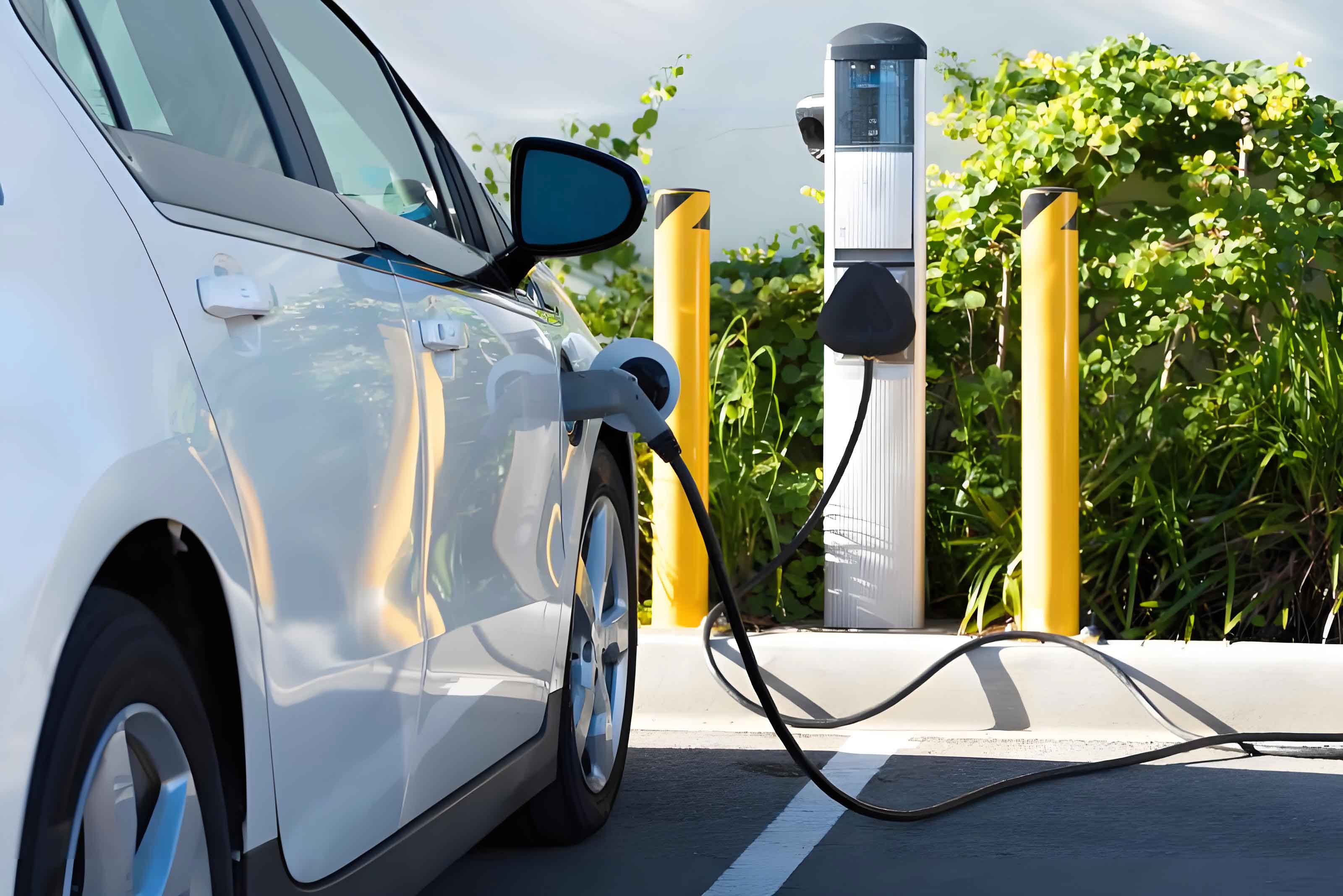We propose a comprehensive framework for optimizing distribution network (DN) operations by leveraging the reactive power compensation capability of electric vehicles (EVs) while addressing inherent uncertainties in EV charging behavior. Our approach integrates improved scenario generation, coordinated active-reactive power dispatch, and an enhanced optimization algorithm, significantly enhancing grid stability and economic efficiency.

1. Introduction
The proliferation of electric vehicles intensifies DN challenges, including voltage fluctuations (e.g., drops to 0.85 p.u.), increased network losses (up to 15.36% in unmanaged cases), and renewable energy curtailment (e.g., 6,343.17 kWh solar wastage). Traditional studies focus solely on active power management, neglecting electric vehicle reactive power support via bidirectional chargers. We bridge this gap by:
- Modeling EV reactive power capabilities using four-quadrant chargers.
- Generating realistic EV charging scenarios via an enhanced Generative Adversarial Network (GAN).
- Formulating a dynamic weighted multi-objective optimization model.
- Solving the model using a Niche Particle Swarm Optimization (NPSO) algorithm.
2. EV Charging Scenario Generation via Improved GAN
Electric vehicle load uncertainty is captured using a GAN augmented with:
- Wasserstein Distance & Gradient Penalty: Mitigates mode collapse and vanishing gradients:W(pdata,p0)=sup∥D∥L≤1Ex∼pdata[D(x)]−Ez∼pz[D(G(z))]W(pdata,p0)=∥D∥L≤1supEx∼pdata[D(x)]−Ez∼pz[D(G(z))]Gpenalty=λEx^[(∥∇D(x^)∥2−1)2],x^=ϵx+(1−ϵ)G(z)Gpenalty=λEx^[(∥∇D(x^)∥2−1)2],x^=ϵx+(1−ϵ)G(z)
- Conditional Variables & Self-Attention: Guides scenario generation with temporal/contextual features and captures long-range dependencies:A(Q,K,V)=softmax(QKTdk)V,where Q=XWQ, K=XWK, V=XWVA(Q,K,V)=softmax(dkQKT)V,where Q=XWQ, K=XWK, V=XWV
Performance Metrics:
- Coverage (C): Measures the proportion of real scenarios enclosed by generated scenarios.
- Envelope Area (E_a): Quantifies the spread of generated scenarios:C=1N∑n=1NBn,Bn=C=N1n=1∑NBn,Bn=Ea=1N∑n=1NEa=N1n=1∑N
Table 1: Scenario Generation Performance
| Method | Coverage (%) | Envelope Area (%) |
|---|---|---|
| Proposed GAN | 92.84 | 0.3971 |
| WGAN-GP | 91.69 | 0.4595 |
| Markov Chain | 90.53 | 0.6837 |
| Monte Carlo | 89.97 | 0.5429 |
3. Coordinated Active-Reactive Power Optimization Model
3.1. Demand Response Mechanism
Electric vehicle users are guided via time-of-use pricing. The price elasticity matrix EE translates price changes ΔDtΔDt to load adjustments ΔPtΔPt:[ΔPfΔPpΔPv]=[Pf0000Pp0000Pv0]E[ΔDfDf0ΔDpDp0ΔDvDv0],E=[εffεfpεfvεpfεppεpvεvfεvpεvv]ΔPfΔPpΔPv=Pf0000Pp0000Pv0EDf0ΔDfDp0ΔDpDv0ΔDv,E=εffεpfεvfεfpεppεvpεfvεpvεvv
3.2. Objective Function
Minimize a weighted sum of four objectives:Z=min(β1ϕloss+β2ϕvd+β3ϕcurt+β4ϕcost)Z=min(β1ϕloss+β2ϕvd+β3ϕcurt+β4ϕcost)
- Network Loss (ϕlossϕloss): ∑t=1T∑i=1NIi,t2Ri∑t=1T∑i=1NIi,t2Ri
- Voltage Deviation (ϕvdϕvd): ∑t=1T∑i=1N∣Ui,t−Urated∣∑t=1T∑i=1N∣Ui,t−Urated∣
- Renewable Curtailment (ϕcurtϕcurt):
- Operating Cost (ϕcostϕcost):
Table 2: Dynamic Weight Coefficients
| Period | β1β1 (Loss) | β2β2 (Voltage) | β3β3 (Curtailment) | β4β4 (Cost) |
|---|---|---|---|---|
| Peak | 0.3 | 0.2 | 0.2 | 0.3 |
| Normal | 0.2 | 0.2 | 0.2 | 0.4 |
| Valley | 0.2 | 0.2 | 0.3 | 0.3 |
3.3. Constraints
- Power Flow:Pi,t=Ui,t2Gii+∑j∈ΩiUi,tUj,t(Gijcosθij,t+Bijsinθij,t)Pi,t=Ui,t2Gii+j∈Ωi∑Ui,tUj,t(Gijcosθij,t+Bijsinθij,t)
- EV Charger Operation:Pev,i,t=12(Iev,i,tdUev,i,td+Iev,i,tqUev,i,tq),Qev,i,t=12(Iev,i,tqUev,i,td−Iev,i,tdUev,i,tq)Pev,i,t=21(Iev,i,tdUev,i,td+Iev,i,tqUev,i,tq),Qev,i,t=21(Iev,i,tqUev,i,td−Iev,i,tdUev,i,tq)
- State-of-Charge (SoC):Sk,t+1=Sk,t+Pch,k,tΔtηchEbat,k−Pdis,k,tΔtEbat,kηdis,Smin≤Sk,t≤SmaxSk,t+1=Sk,t+Ebat,kPch,k,tΔtηch−Ebat,kηdisPdis,k,tΔt,Smin≤Sk,t≤Smax
- Voltage & Current Limits:Uimin≤Ui,t≤Uimax,Iij,t≤IijmaxUimin≤Ui,t≤Uimax,Iij,t≤Iijmax
4. Solution Algorithm: Niche Particle Swarm Optimization (NPSO)
NPSO enhances traditional PSO with:
- Niche Technology: Divides the population into sub-groups to avoid local optima.
- Nonlinear Inertia Weight: Improves convergence speed:ωk=ωmax−(ωmax−ωmin)sin(πkkmax)ωk=ωmax−(ωmax−ωmin)sin(kmaxπk)
- Chaotic Randomness: Adjusts stochastic parameters r1,r2r1,r2:r1k+1=4r1k(1−r1k),r2k+1=4r2k(1−r2k)r1k+1=4r1k(1−r1k),r2k+1=4r2k(1−r2k)
Algorithm Steps:
- Initialize particle positions/velocities.
- Calculate fitness using niche-based selection probability:P(xi)=∑j=1N∣Si−Sj∣,Si=∑j=1N(1−dij∑min(dij)/m)2P(xi)=j=1∑N∣Si−Sj∣,Si=j=1∑N(1−∑min(dij)/mdij)2
- Update velocity and position:Vik+1=ωkVik+c1r1(Pbest−Xik)+c2r2(Gbest−Xik)Vik+1=ωkVik+c1r1(Pbest−Xik)+c2r2(Gbest−Xik)Xik+1=Xik+Vik+1Xik+1=Xik+Vik+1
Table 3: Algorithm Performance Comparison
| Algorithm | Solving Time (s) | Convergence Iterations |
|---|---|---|
| NPSO | 5,681 | 43 |
| PSO | 7,292 | 89 |
| GWO | 6,547 | 71 |
5. Case Study: IEEE 33-Node System
- Test System: 1,500 electric vehicles, PV (Nodes 2, 5, 21), Wind (Node 29), SVCs (Nodes 2, 5, 21).
- Scenarios:
- S1: Base (no EVs).
- S2: Uncontrolled EVs.
- S3: Active power optimization only.
- S4: Active-reactive coordination (proposed).
- S5: S4 + stochastic optimization (uncertainty-aware).
Table 4: Operational Results Across Scenarios
| Scenario | Wind Curtailment (kWh) | Solar Curtailment (kWh) | Voltage Deviation (p.u.) | Total Cost (¥) |
|---|---|---|---|---|
| S1 | 2,974.97 | 6,343.17 | 14.18 | 45,016.02 |
| S2 | 626.78 | 3,486.74 | 15.22 | 53,293.01 |
| S3 | 116.70 | 1,561.52 | 13.35 | 44,859.57 |
| S4 | 0 | 1,054.61 | 9.68 | 43,014.33 |
| S5 | 0 | 1,183.25 | 10.41 | 43,976.84 |
Key Outcomes:
- Network Loss Reduction: S4 reduces losses by 18.14% vs. S2.
- Voltage Stability: Minimum voltage elevated to >0.95 p.u. in S4 (vs. 0.85 p.u. in S2).
- Renewable Integration: Zero wind curtailment in S4/S5.
- Capacitor Switching: 241 switching actions in S4 (16.02% fewer than S3).
6. Conclusion
Our framework demonstrates that electric vehicles significantly enhance DN stability and economy when their reactive power capabilities and uncertainties are co-optimized:
- The improved GAN generates high-fidelity electric vehicle charging scenarios (92.84% coverage).
- Active-reactive coordination reduces losses by 18.14% and eliminates voltage violations.
- NPSO solves the model 22.09% faster than PSO.
This work provides a scalable solution for integrating electric vehicles into modern power systems.